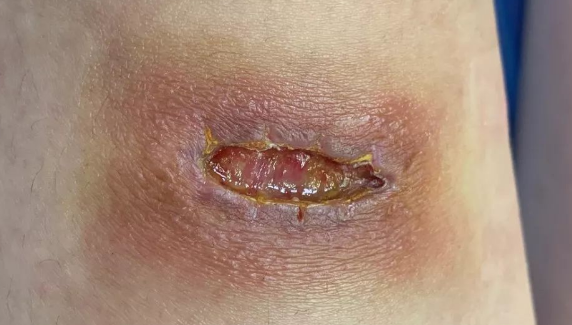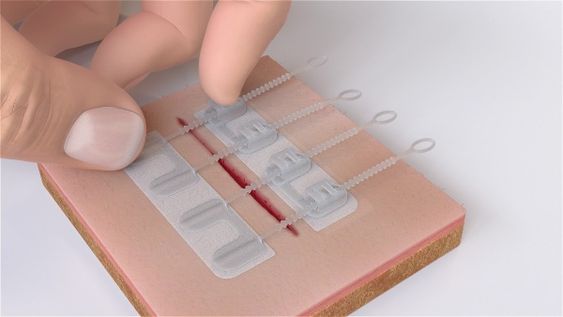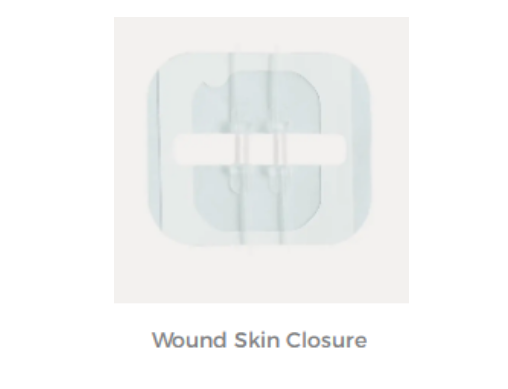Sutured before the end of the operation. Our daily activities will also increase the tension of the skin, so some wounds will crack. If the cracked wound is Small, no need to deal with it can be restored automatically. If the wound dehiscence is relatively large and there is still pus, then it is necessary to pay attention to the cleanliness of the wound surface to prevent infection, so what should I do if the sutured wound dehisces? Let's take a look together below.
What are the types of wound suturing in common operations?
During surgery, surgical wounds are usually healed with staples and sutures, and sometimes they may open due to infection or other findings during surgery.
Why do wounds open after surgery?
1. More exudate: There is more exudate in the local wound, and the drainage is not smooth, which will cause wound infection, which will lead to further expansion and dehiscence of the wound.
2. Large range of motion: Because the wound has not fully healed, strenuous activities or excessive range of motion have been done, which will cause the wound to be stretched and cracked.
3. Location: Wounds in some joints. Due to the special location, the wounds in these parts often need to be moved, so they wounds in these parts are prone to cracking.
4. Common risk factors for surgical wound dehiscence :
① diabetes
② malnutrition or malnutrition
③ clouds of smoke
④ obesity
⑤ ischemia
⑥ Infect
How to manage wound dehiscence?
1. The appearance and location of the wound should first be assessed: wound measurements need to be recorded as length, width, and depth, and an assessment of the wound tract and destruction should be completed accordingly. The condition of the peri-wound skin and wound drainage (volume, color, odor) also needs to be assessed and documented.
2. Disinfect the wound: Use running water to clean the surface of the wound, and then use povidone iodine to disinfect the wound after drying. Take care to keep the wound site clean until the wound heals.
3. Use functional wound dressing: Note that large wounds still need to be sutured again. If the wound is deep and there is a sinus tract inside, an alginate dressing rope can be used to fill the wound sinus tract. For small wounds, auxiliary dressings can be used instead of suturing. Wound characteristics Select the corresponding wound dressing, then use the wound skin closure dressing to stick on the wound, and tie the wound skin closure belt vertically from the middle of the wound. Stick it from both ends of the wound to the middle, so as to prevent the wound from dehiscence.
How to prevent surgical wound dehiscence?
Some ways to prevent surgical wound dehiscence include supporting the abdomen when coughing, sneezing, or walking around in bed or sitting up, avoiding pressure or pressure on the wound area (weight lifting, exercise, coughing, straining for Good eating habits and good oral intake to prevent dehydration. It is imperative to practice good hygiene, keep the wound clean, dry, and intact, and follow the provider's specific instructions for wound care and any prescribed medications. Wound skin closure, an auxiliary dressing, can also be attached to the sutured wound site, which can effectively reduce the chance of wound dehiscence.
Prevention of wound dehiscence and infection is a fundamental principle of perioperative education. Preventing postoperative complications can speed up the time it takes for patients to return to normal daily life.
For more information on Innomed® wound skin closure, refer to the previous articles. If you have customized needs, you are welcome to contact us; we will serve you wholeheartedly.
At Longterm Medical, we transform this data by innovating and developing products that make life easier for those who need loving care.
Editor: kiki Jia
Date: February 9, 2023

 English
English عربى
عربى Español
Español русский
русский 中文简体
中文简体








